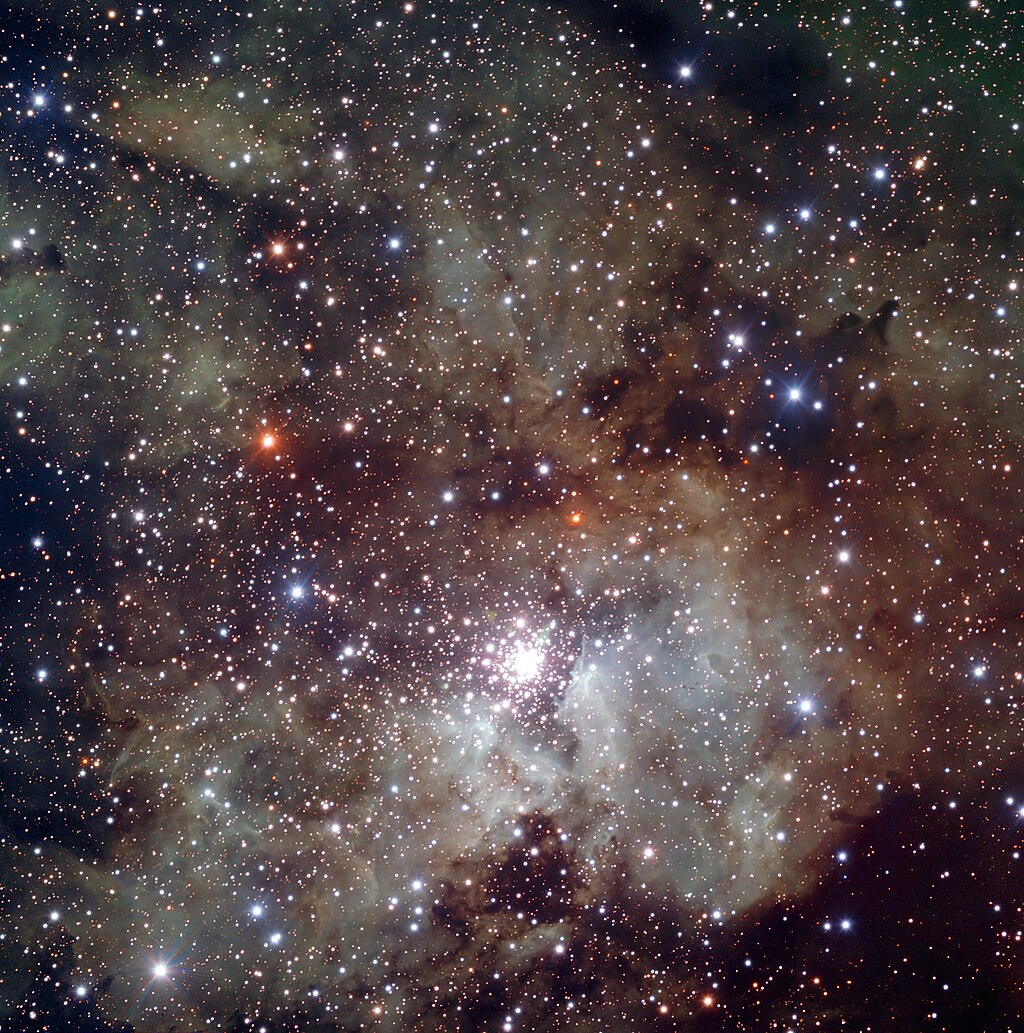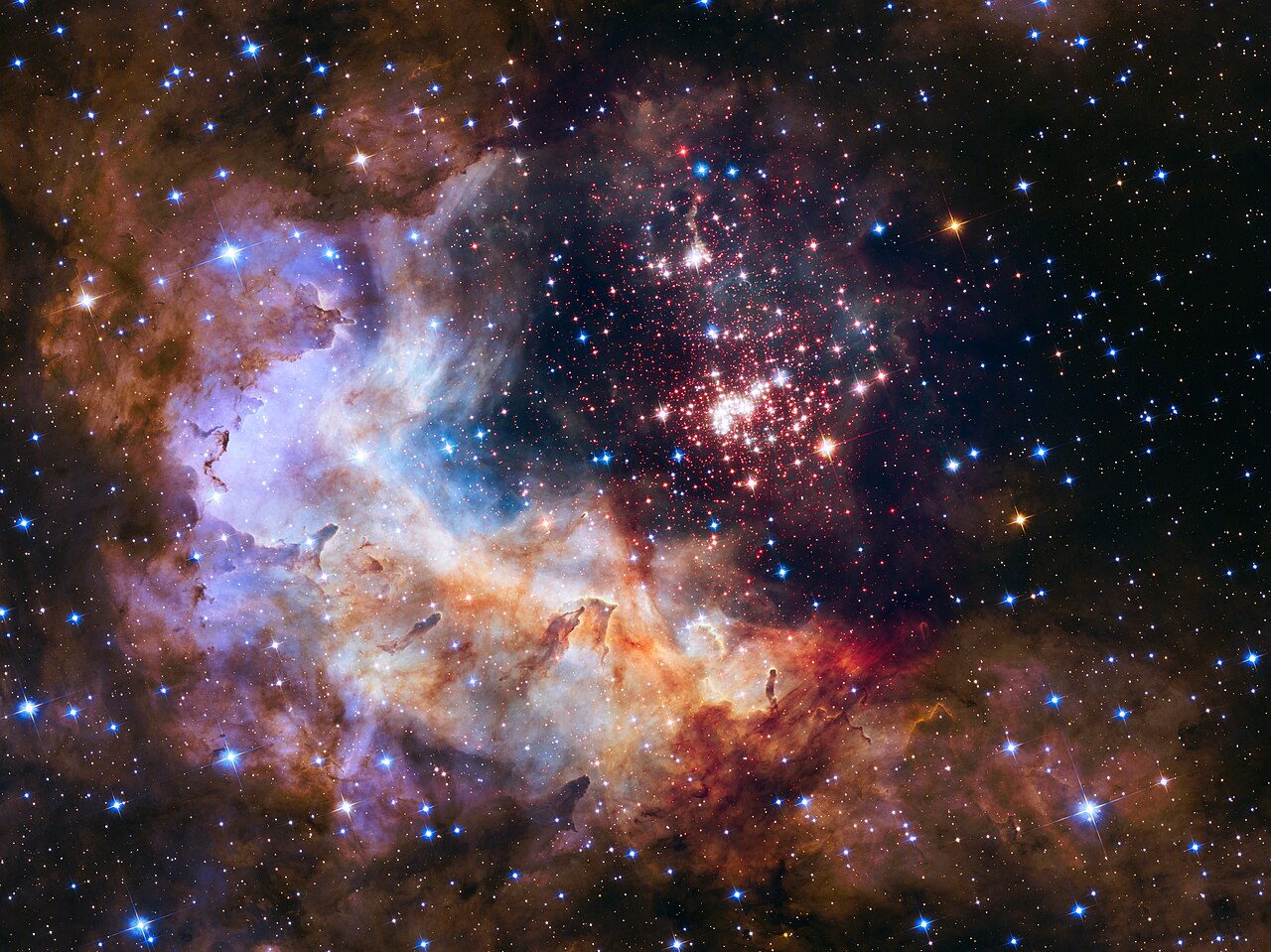Double Cluster of Perseus. Image: Bill McSorley.
My first impression of the APOD was that the colors are quite "flat". I much prefer the richer, more varied colors of Bill McSorley's image. In McSorley's picture, the bright blue stars hardly look blue at all. That's quite correct, too, because the stars of the Double Cluster are dust-reddened.
But if I find the colors of the brightest stars in Tommy Lease's image "flat", the resolution of his picture is beautiful. A rich, deep, many-colored starfield opens up if you look at the full size version of his image.
Note that south is up and east to the right in Tommy Lease's image, which is not how the Double Cluster is conventionally portrayed.
The Double Cluster is a most interesting pair of clusters in many ways.
Wikipedia wrote:
NGC 869 has a mass of 4,700 solar masses and NGC 884 weighs in at 3,700 solar masses; both clusters are surrounded with a very extensive halo of stars, with a total mass for the complex of at least 20,000 solar masses. They form the core of the Perseus OB1 association of young hot stars.
That's massive!
Based on their individual stars, the clusters are relatively young, both 14 million years old. In comparison, the Pleiades have an estimated age ranging from 75 million years to 150 million years.
The stars of the Double Cluster are not babies, because at 14 million years they have left their stellar babyhood behind, but I can't resist this picture of two massive human babies anyway:
There are more than 300 blue-white super-giant stars in each of the clusters.
No, seriously, is that possible?
300 blue-white supergiant stars in each of the clusters?
There are, how many, blue-white supergiants in Orion? Are we talking five? Rigel, Alnitak, Alnilam, Saiph,
maybe Mintaka? And background B2Ia star Chi2 Orionis in the northern part of the constellation. The other blue-white stars in Orion are not supergiants, but "merely" giants or main sequence stars. Frankly, I find the "300 blue-white supergiant stars in each cluster of the Double Cluster" estimate impossible.
I'd like to compare the Double Cluster with two other massive but younger clusters, NGC 3603 and Westerlund 2. Unlike the Double Cluster, NGC 3603 and Westerlund 2 are surrounded by large nebulas.
NGC 3603 and Westerlund 2 are massive clusters that are much younger than the Double Cluster. They are both 1-2 million years old, compared with 14 million years for the Double Cluster. The behemoths of Perseus were once surrounded by splendid nebulas, too, but their fierce stellar winds have blown all the nebulosity away.
But what about the masses of NGC 3603 and Westerlund 2?
So the authors think that the total mass of NGC 3603 is 10,000-16,000 solar masses. That is still less than the 20,000 solar masses estimated for the Double Cluster with their extensive halo of stars. I guess I had expected more from the remarkable NGC 3603.
What about Westerlund 2?
Peter Zeidler, Elena Sabbi, Antonella Nota, Anna F. McLeod wrote:
A thorough analysis of the dynamical state of Wd2, which determines a dynamical mass range of Mdyn,Wd2=(7.5±1.9)⋅10
4−(4.4±1.1)⋅10
5M
⊙ and exceeds the photometric mass by at least a factor of two leads to the conclusion that Wd2 is not massive enough to remain gravitationally bound.
I'm not exactly sure what the authors are saying here, but I
think they are saying that the mass of Westerlund 2 is between ~75,000 and 440,000 solar masses. Okay! That's quite massive, and the cluster looks impressive. But Westerlund 2 is apparently still not massive enough to stay gravitationally bound like a globular cluster. (Really? 440,000 solar masses is not enough for a cluster to stay gravitationally bound?)
That spells doom for the Double Cluster, too!

Enjoy them while you can!

Ann
 A Double Star Cluster in Perseus
A Double Star Cluster in Perseus



